John Hurrell – 18 November, 2011
So these images become in essence the storyboards of an imagined film or novel about colonialism in the Pacific, not just a bunch of bright, exuberant and funny paintings for their own sake. It is as if John Bunyan or Edmund Spenser, after watching Hone Harawira on the news, ran riot with a paintbrush.
Auckland
Roger Boyce
Aotearoa: A Pictorial Allegory
9 November - 17 December 2011
Roger Boyce has exhibited before in Auckland, but not his paintings. So as a Californian HOD of painting at Ilam, a regular reviewer for Art in America, and quite a vocal personality in the Christchurch art community now strutting his stuff in Parnell, this is a chance for Aucklanders to see what sort of painting practice he stands for. With these works, his persona - the sensibility he projects - is a bit like George Baloghy meets Glen Baxter and Mark Tansey. Using colourful viscous oil paint on small wooden panels he creates socially dodgy images with elements taken from (amongst other things) dreamy love comics, risqué carnival posters or torrid paperback covers.
Boyce likes to tease, if not needle, the audience of his comparatively new home, but part of that provocation is achieved by his very specific title for the series - Aotearoa: A Pictorial Allegory. The concept of allegory, rejuvenated in the eighties by Craig Owens and October, uses narrative imagery to extend a metaphor so it becomes overarching in its embracing of symbolic, social and political meanings. It is less compact in reach, being more expansive than a simple symbolic image. So these images become in essence the storyboards of an imagined film or novel about colonialism in the Pacific, not just a bunch of bright, exuberant and funny paintings for their own sake. It is as if John Bunyan or Edmund Spenser, after watching Hone Harawira on the news, ran riot with a paintbrush.
Boyce seems to be attempting to be a cat amongst the pigeons, the fly in what might be seen as the politically correct ointment of social engineering. But there is a lot of ambivalence here, it is not that obvious - for these works are too restrained to be overtly tubthumping or offensive. They are too sly for that, having several meanings. With the titles you can key into (on some panels) issues of biculturalism, the Treaty, or related foreshore debate, but much of it is about gender wars too, or (disarmingly) the innocent sweetness of romance and travel. They oscillate, being smarty britches, acerbic, and poignantly moving, simultaneously.
Many of the twelve images feature brown hunky men and pale curvaceous women (or voluptuous dark dames and pink he-men) in straight forward narratives that become highly ambiguous through mischievous titling. Those labels are crucial.
For example, we see in Third Great Migration a bronzed man in shallow water is watching a longhaired pale woman swimming out to sea. I assume the title is about ‘white flight’ to Australia, but the image can also oddly be about desire and flirtation (two way attraction).
Another work, Utu, shows a white woman in a red dress on the left desperately fighting off an aroused, very determined native, while on the right, the same woman angrily slaps the same handsome dark fellow across the face. Never has revenge appeared so alarmingly comical. As in humorous, and like comics with their frozen poses.
Long Pig on the other hand, refers to cannibalism but this could just as easily be about rape or an orgy. Two brown women have fastened a half-naked pale man to stakes in the ground, and while he might be eaten later the mood is also sexual (white man’s fantasy?) and coercive. Somebody is exuberantly playing a bongo, and high in the sand dunes, the pinioned man’s trussed up white girlfriend awaits a similar fate.
The rape of Aotearoa is specifically mentioned in another painting, again set on a beach. A struggling black woman is having her bikini bottom forcibly removed by a wiry white man while her male native partner is restrained in the distance by another muscular villain. The metaphor here is pretty obvious.
Is Boyce making something of value with these loaded ambiguous images and baiting titles? Or is the whole project pretty silly, that of being sensational just for a laugh, but with no intellectual substance within? Perhaps the only way to tell might be to put a bunch of his paintings in a large group show surrounded by works from artists like Peter Robinson, Robert Jahnke, Nova Paul, Lonnie Hutchinson and Michael Parekowhai, and see how the conversation develops - if at all - between works that share a common theme but look at it from radically different political positions. Such a scheme might create a fascinating forum, a refreshing catalyst for debate - if some hosting art institution had the nerve.
John Hurrell
Recent Comments
John Hurrell
I'm fascinated by your reading of these works, Hayley, as opposed to my own. I might indeed be prone to ...
Hayley Brown
I have to disagree with John Hurrell's view of Roger Boyce's work. His work exposing the colonial social culture and ...
Andrew Paul Wood
Actually Utu looks to me more as though in the second part of the image the white woman has turned ...
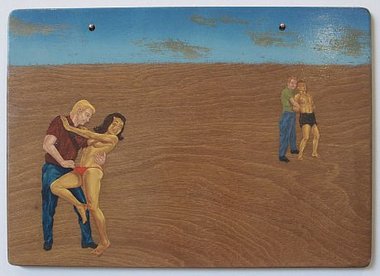
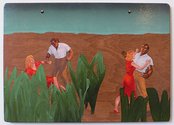
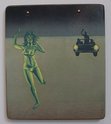
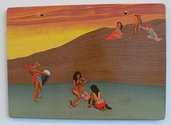
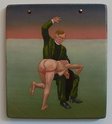
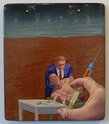
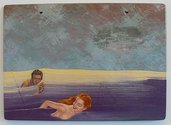
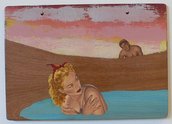
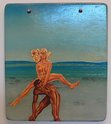
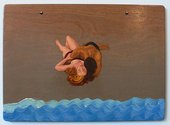
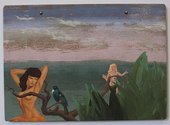
 Two Rooms presents a program of residencies and projects
Two Rooms presents a program of residencies and projects Advertising in this column
Advertising in this column



This Discussion has 3 comments.
Comment
Andrew Paul Wood, 7:25 p.m. 18 November, 2011 #
Actually Utu looks to me more as though in the second part of the image the white woman has turned into the sexual aggressor, reinforcing stereotypes about the sexual potency of people of colour and white priveledge. This perspective is somewhat reinforced by conversations I've had with Roger about the work. Delicious work.
Hayley Brown, 3:57 p.m. 6 May, 2012 #
I have to disagree with John Hurrell's view of Roger Boyce's work. His work exposing the colonial social culture and political scene portrays so accurately elements of Maori- Pakeha relations and the effect of a new society emerging and evolving is as current today as it was over 200 years ago. I have to take issue with the dodgy images comment by John. It somehow degrades the whole tone of Boyce's work. It's as if he's viewing them from a comical point of view, like comparing them to a John Wayne Movie. The allegory reminds us of a somewhat painful journey politically, socially and culturally, not always something that can be briefly commented upon, these pictures bring the issues to the forefront in a positive intellectually inspiring confrontation and certainly should be viewed alongside any historical book and serve as a modern day illustration.
John Hurrell, 8:17 p.m. 6 May, 2012 #
I'm fascinated by your reading of these works, Hayley, as opposed to my own. I might indeed be prone to irresponsible flippancy (if that is what you are implying), but I consider Roger's paintings closer in tone to Glen Baxter (http://www.glenbaxter.com/) than Mark Tansey (http://www.gagosian.com/artists/mark-tansey) . As illustrations their mood is surely humorous, with a smart-alecky component - but also showing an awareness of postcolonial themes, for they are complex. Hopefully that wouldn't exclude them from a book of essays that were historical or political in theme too.
Participate
Register to Participate.
Sign in
Sign in to an existing account.